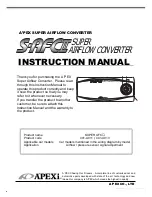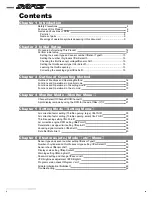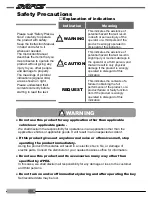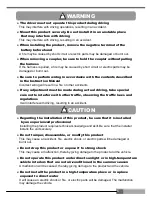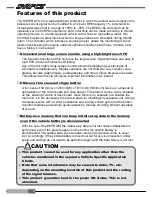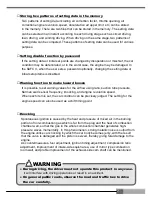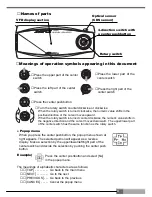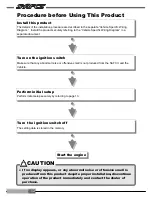
6
●
This product cannot be used for any application other than the
vehicles mentioned in the separate Vehicle Specific Application
Charts.
●
Note that noise interference may be caused to radio, TV, etc.
depending on the mounting location of this product and the routing
of the signal harness.
●
This product generates heat in the power ON status. This is not
abnormal.
CAUTION
!
■
Unconventional large screen monitor using a high-brightness VFD
The futuristic front face of this unit uses the large screen, high-brightness and easy to
read VFD (Vacuum Fluorescent Display)
Use of the dot-matrix large screen monitor allows the displaying several types of
information simultaneously. Display variations are not limited to only numeric value
display, but also graph display, analog display, and other various displays are shown.
This allows the driver to recognize important information in an instant.
■
Utilizes a thin case and single button
A thin case of 52 mm(L) x 126 mm(W) x 18 mm (D) (Minimum) has been achieved by
optimization of the circuit board and case design. The product can be easily installed
on the steering column or dash board. Since there is no separate unit besides the
main unit, it is not necessary to secure a place for installing any separate unit. Using a
4-direction switch with a center pushbutton and a rotary switch gets rid of the button-
to-button distance and permits quick operations, thereby providing efficient operation
of the unit.
■
Battery-less memory that can keep initial setup data in the memory
even if the vehicle battery is disconnected
With the use of the EEPROM, the initial setup data is not lost unless initialization is
performed, even if the power supply is turned off or the vehicle battery is
disconnected. The setting data, such as peak value and correction value, is never
lost. Accordingly, if the vehicle battery is disconnected for service inspection, initial
setup and settings do not need to be performed again and the data history is not lost.
Features of this product
The SUPER AFC II is a fuel adjustment controller in which the airflow sensor signal or the
pressure sensor signal can be modified in a 12 point RPM range by 1% increments to
increase/decrease fuel in a range of +50% to –50%. The RPM to be corrected can be
optionally set in 200 RPM increments, and corrections can be made according to throttle
opening amounts. In a turbo equipped vehicle with a hot wire type airflow meter, this
controller provides a preventive function for engine stall due to blow-back during throttle
return. The controller, which includes a knocking meter, allows the monitoring of knock
levels check keeping the engine under its optimum condition at all times
. (
Vehicle must
have a factory knock sensor)

